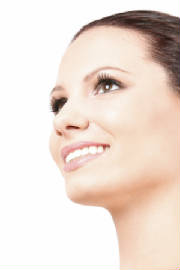For many years, hydroquinone has been considered one of the most effective skin-lightening agents for treatment of sun-induced pigmentation, postinflammatory hyperpigmentation, melasma and other forms of hyperpigmentation often associated with aging skin. In the United States, hydroquinone is classified as an over-the-counter (OTC) drug that may be used in concentrations of up to 2%. Most prescription-strength hydroquinone formulations contain 3–4%, but concentrations as high as 10% may be available through compounding pharmacies. When prescribed by a physician, it is often combined with other actives, such as tretinoin, retinol, vitamin C or glycolic acid.
How does hydroquinone work?
There are various theories about how hydroquinone works to affect hyperpigmentation. Some researchers claim that it denatures the melanin-protein complex, causing a decoloration of the skin. Others claim it inhibits the tyrosinase enzyme, as well as the synthesis of the protein associated with melanin. Because of its cytotoxic impact on the melanocyte, it is said to disrupt basic cellular processes, including DNA and RNA synthesis. Regardless of the mechanism used to lighten skin, the focus these days should really be on the more important concerns regarding the safety of hydroquinone.
Is It Safe?
 There is no doubt about it, hydroquinone is an effective pigment-lightener. However, much attention is now focused on its safety. Not only is safety an issue, but many individuals are allergic to hydroquinone, and others experience serious contact dermatitis with repeated use, leading, unfortunately, to a prescription for a steroid cream to counter the associated irritation. In extreme cases, a condition known as onchronosis can occur, resulting in blue-black macules or hyperpigmentation accompanied by acne-like lesions. Onchronosis generally requires higher concentrations of hydroquinone and is more prevalent in darker skin. However, lower concentrations may also illicit a poor response, too, which has led many dermatologists to a prescriptive cycling of hydroquinone involving using hydroquinone-containing products for four months, stopping for four months and resuming again for four months, and so on. During the off months of a skin lightening treatment, a hydroquinone-free brightener is recommended.
There is no doubt about it, hydroquinone is an effective pigment-lightener. However, much attention is now focused on its safety. Not only is safety an issue, but many individuals are allergic to hydroquinone, and others experience serious contact dermatitis with repeated use, leading, unfortunately, to a prescription for a steroid cream to counter the associated irritation. In extreme cases, a condition known as onchronosis can occur, resulting in blue-black macules or hyperpigmentation accompanied by acne-like lesions. Onchronosis generally requires higher concentrations of hydroquinone and is more prevalent in darker skin. However, lower concentrations may also illicit a poor response, too, which has led many dermatologists to a prescriptive cycling of hydroquinone involving using hydroquinone-containing products for four months, stopping for four months and resuming again for four months, and so on. During the off months of a skin lightening treatment, a hydroquinone-free brightener is recommended.
The Occupational Safety and Health Administration (OSHA) in the United States claims “hydroquinone is mutagenic and has cancer-causing potential.” In 1994, the Journal of the American College of Toxicology (now known as the International Journal of Toxicology) published “The Addendum to the Final Report on the Safety Assessment of Hydroquinone.” Its conclusion stated that “hydroquinone is a potent cytotoxic agent that causes mutations and alterations to DNA, and that it should not be used in any leave-on type of product; it is safe for rinse-off products when used in concentrations less than 1%.” When this was published, many cosmetic manufacturers opted to discontinue their hydroquinone lighteners and some countries went so far as to ban hydroquinone from skin-whiteners. For example, hydroquinone is strictly regulated in many African and Asian countries, and its use is prohibited in the European Union (EU) and Japan. Unfortunately, many hydroquinone-containing whiteners remain on the market to this day. As a matter of fact, most skin-whitening serums and creams currently available contain 2% hydroquinone.
Our suggestion to anyone making a conscious effort to lighten skin and/or reduce hyperpigmentation is to do your research and find a quality skin brightening cream that does not contain hydroquinone but rather a less abrasive lightening agent like kojic acid or kojic dipalmitate.

